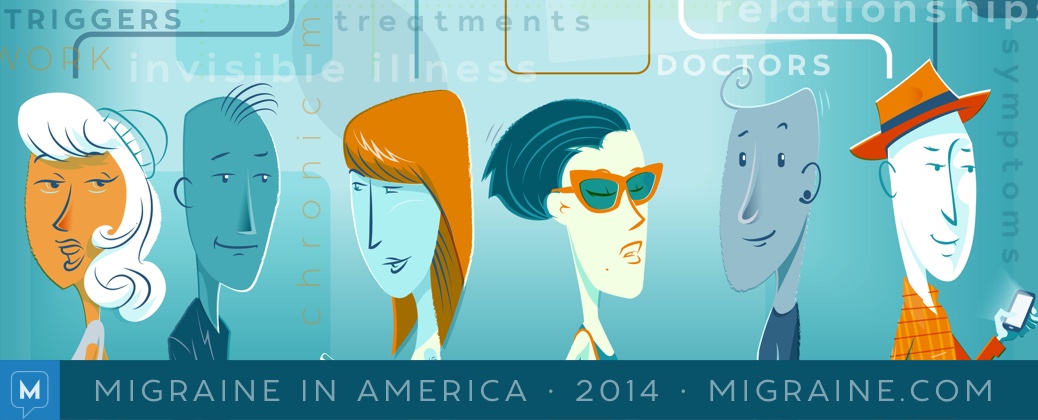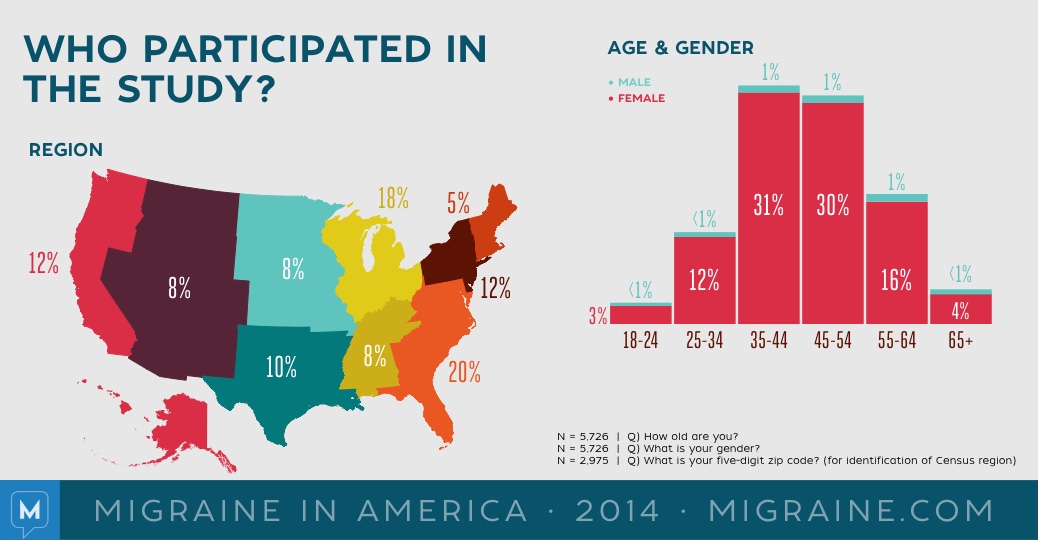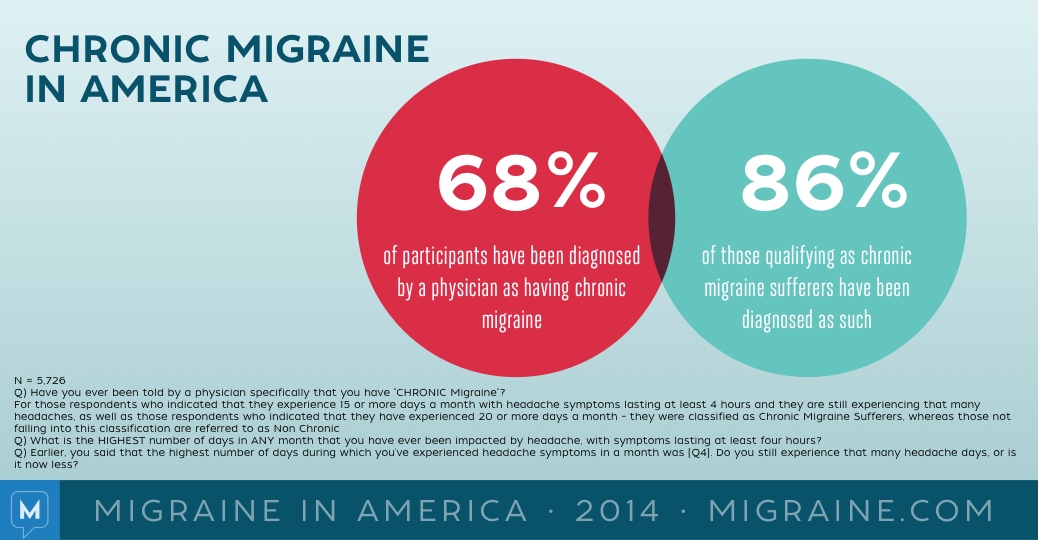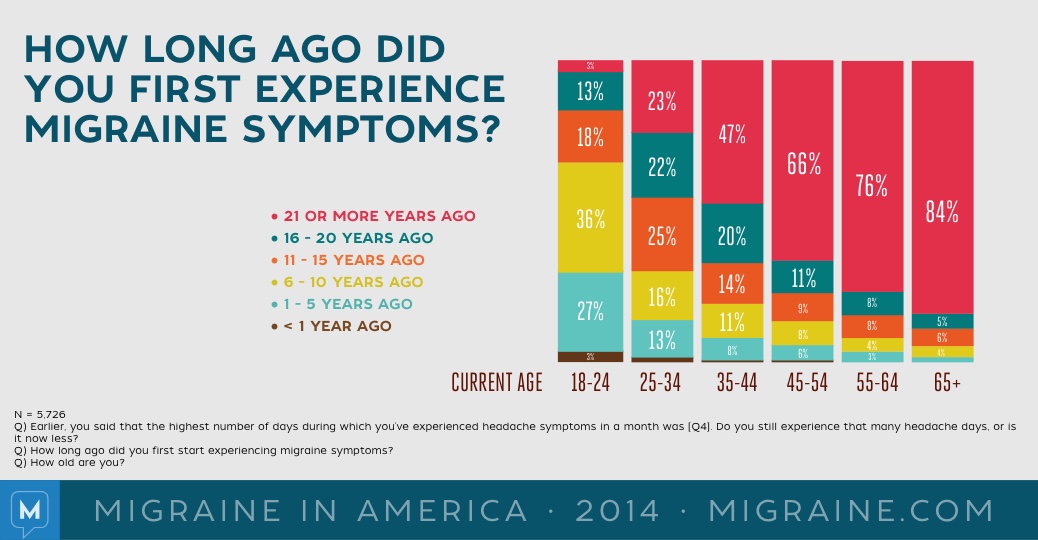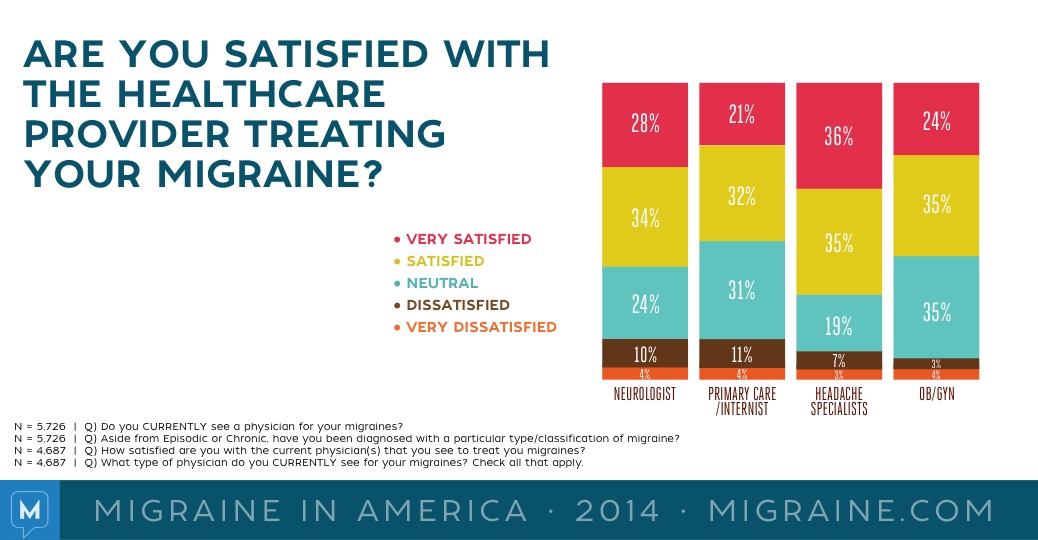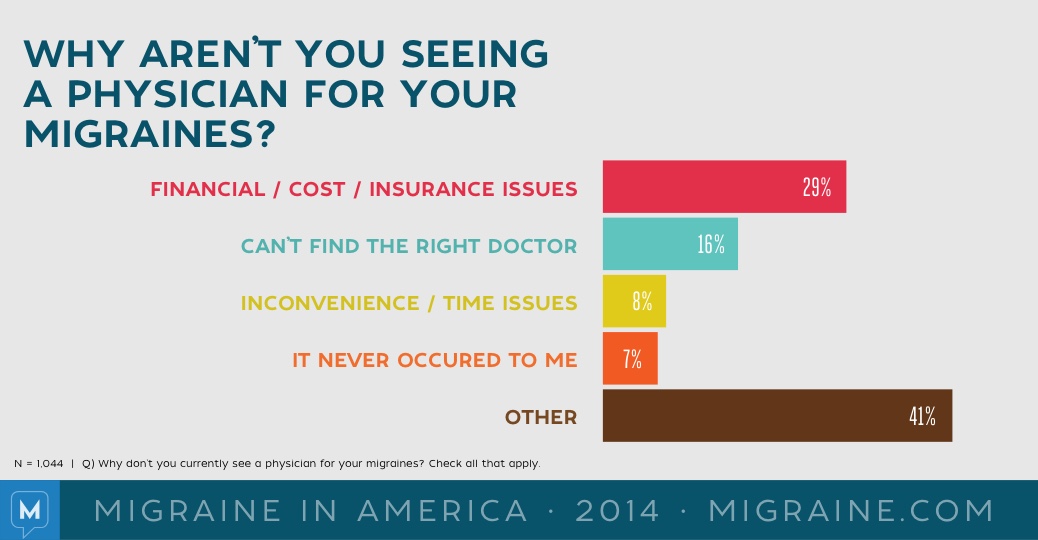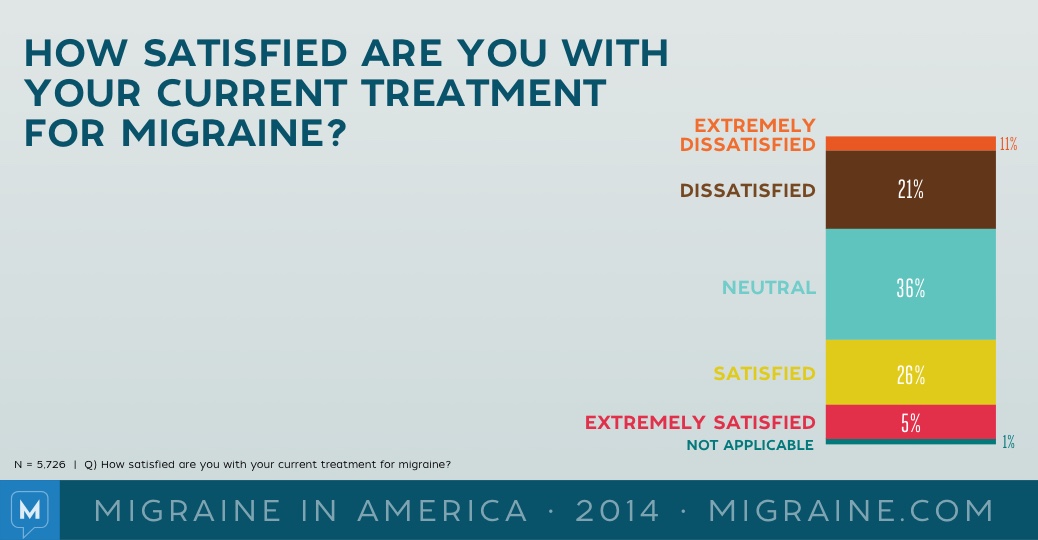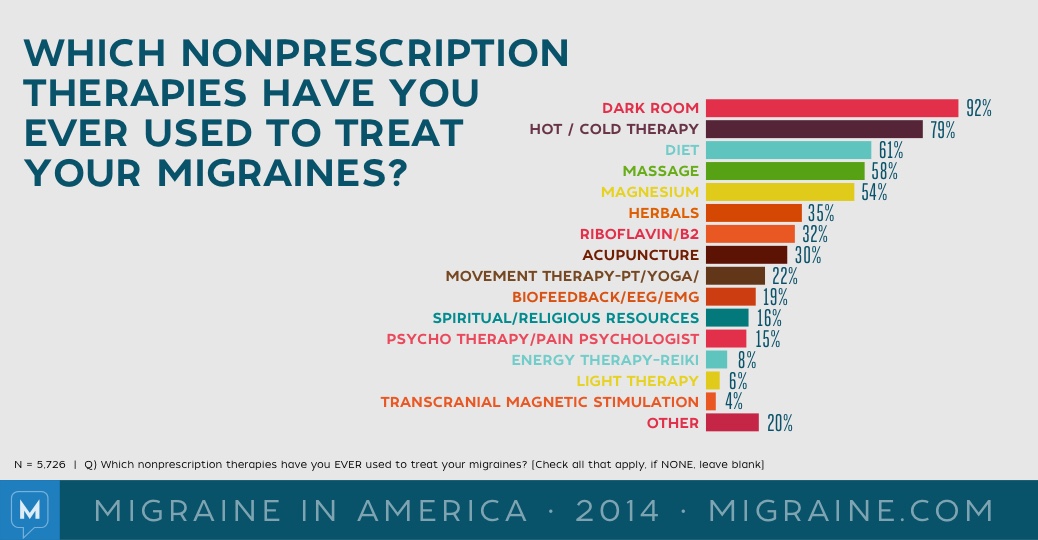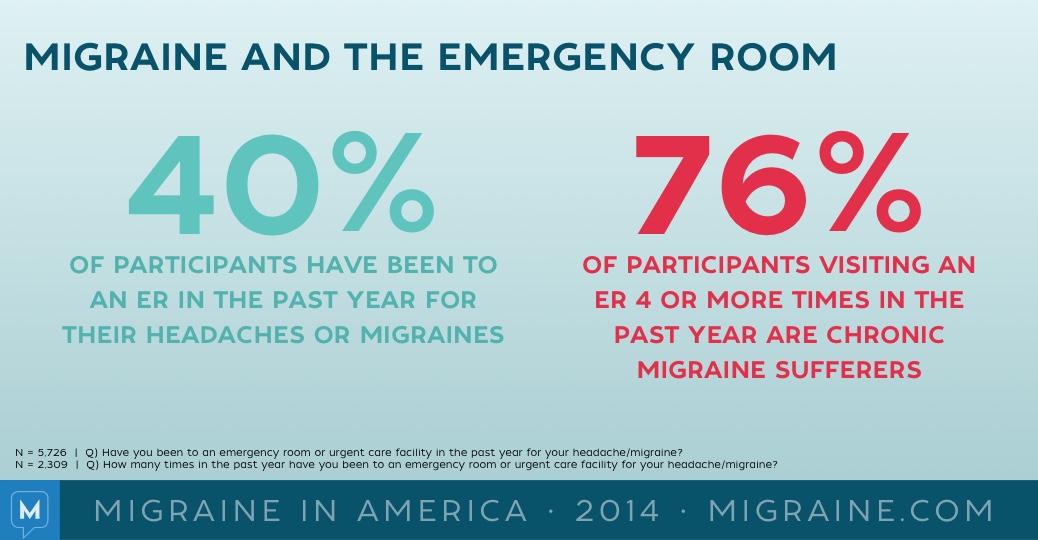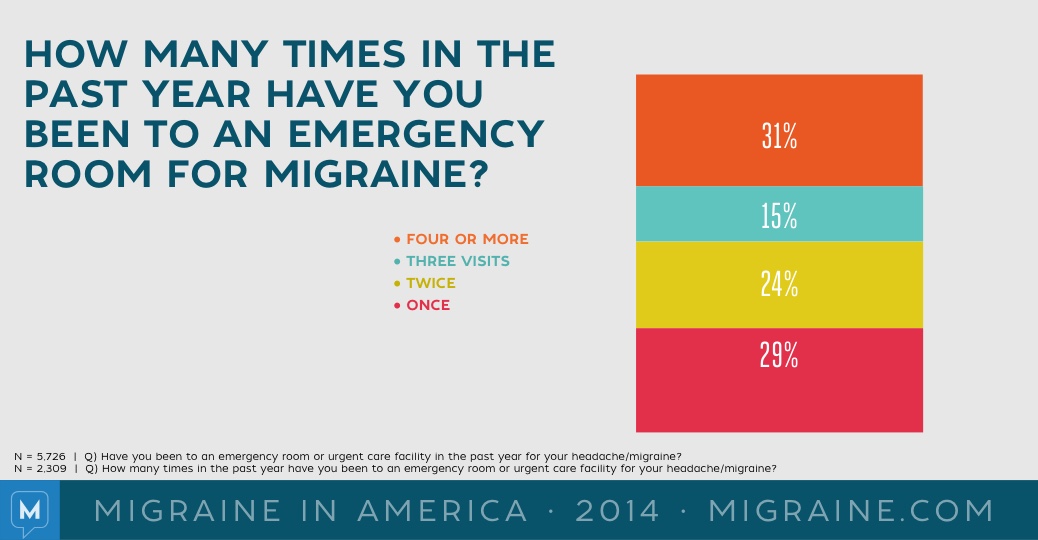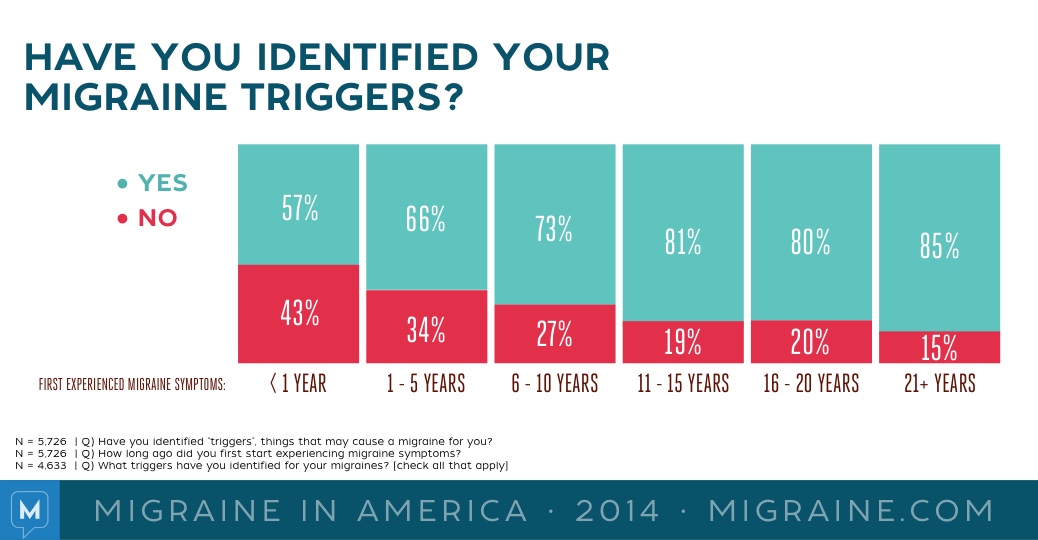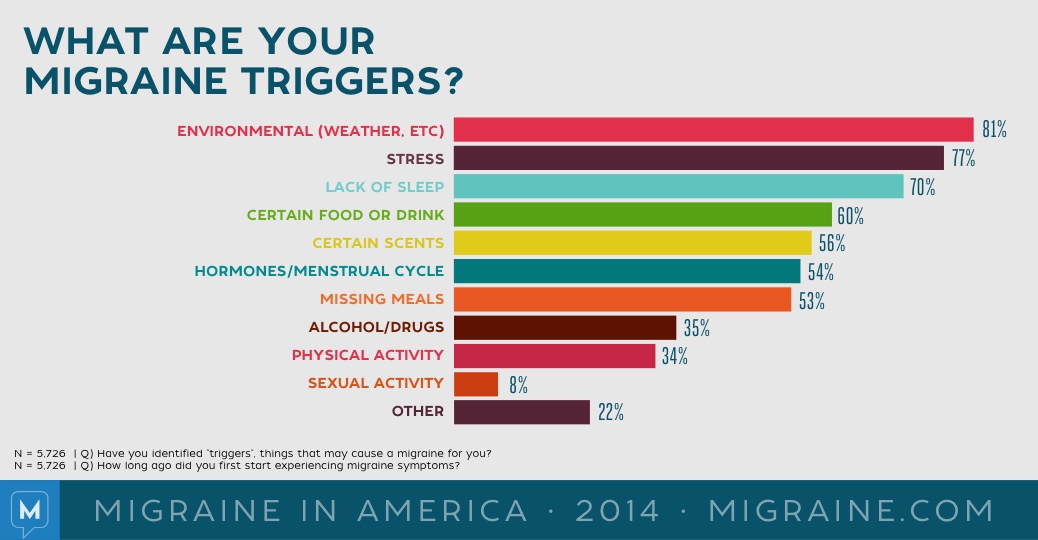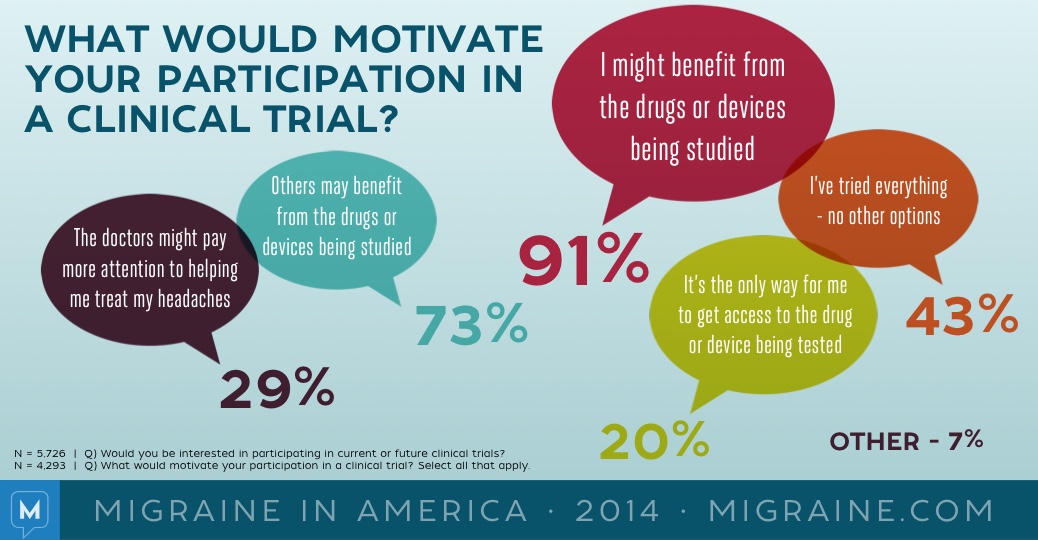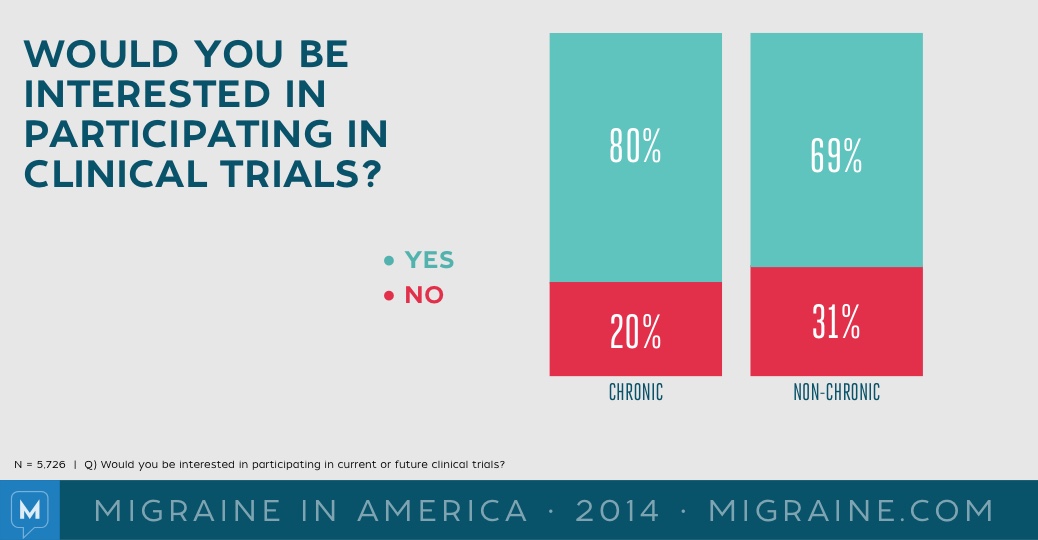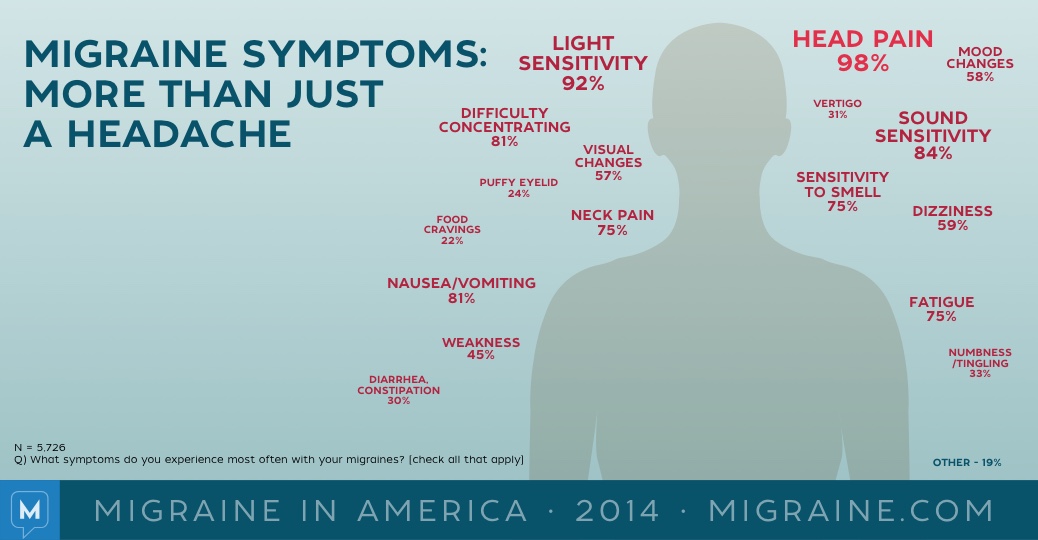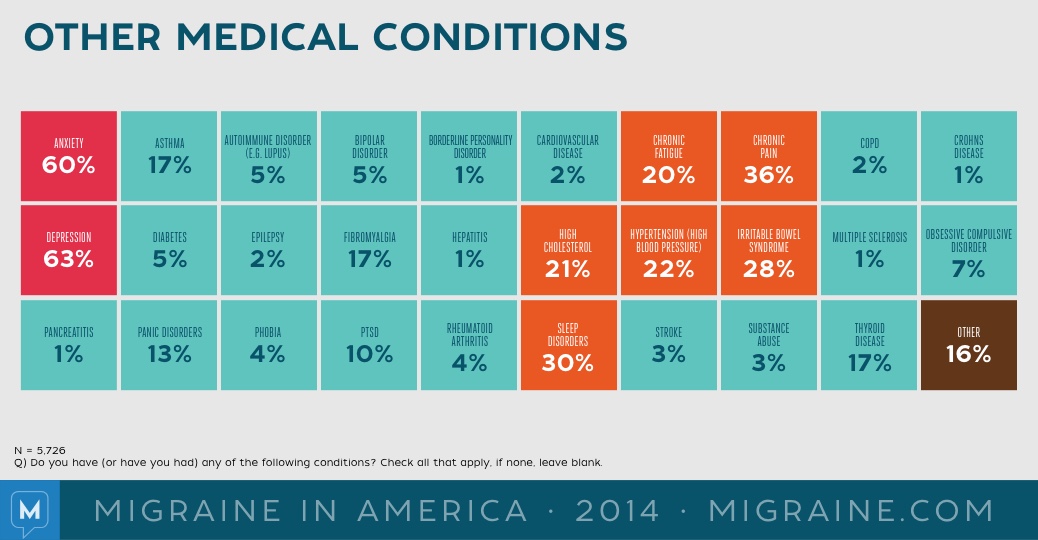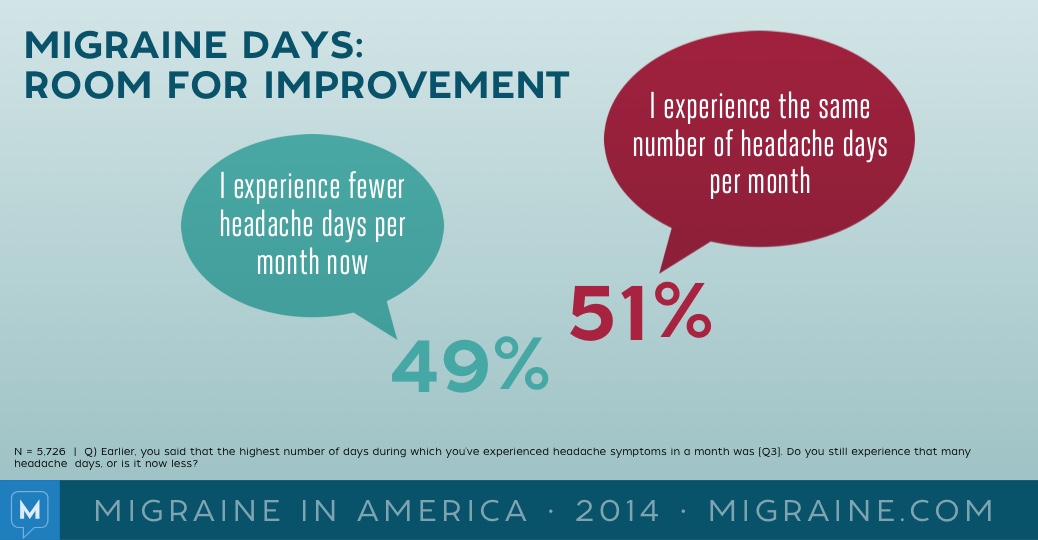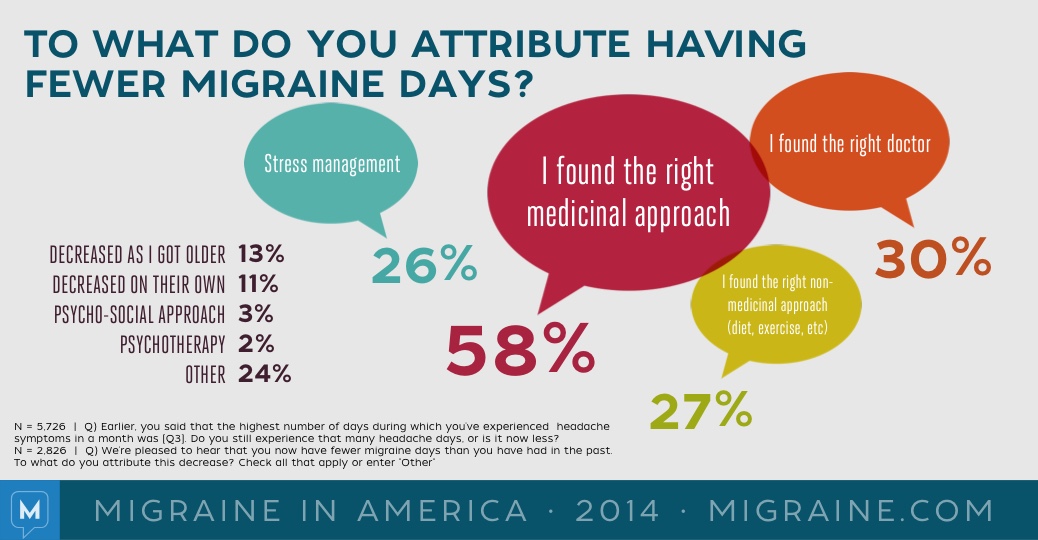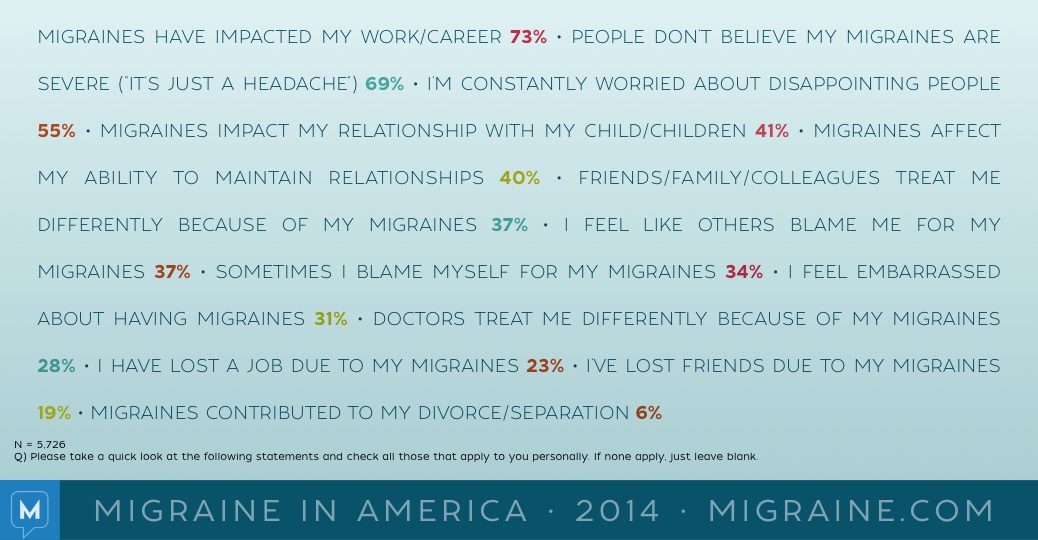Migraine in America 2014
What is the impact of migraine in America? The Migraine in America 2014 study was conducted in the summer of 2014 to learn more about migraine sufferers’ symptoms and triggers, other health conditions, quality of life, physician engagement, as well as awareness and experience with current treatments on the market.
Respondents were recruited from the Migraine.com community. 8,359 individuals started the study and 5,726 qualified individuals completed the study.
Data analysis used a p<0.05 for determining statistical significance; denoted by “significantly” throughout the findings.
Respondents mainly came from all across the United States, and were primarily female (95%) middle age, similar to the profiles of migraine sufferers across the U.S.

Participants of the Migraine in America survey were “experienced” - 68% had been diagnosed with chronic migraine at some point. However, not everyone who met the criteria for chronic migraine had been formally diagnosed by a doctor.
More than half or respondents had been experiencing migraine symptoms for over 20 years. Most have been experiencing symptoms for at least half of their lives .

Although 82% of respondents were currently under the care of a physician for their migraines, only 30% have been diagnosed with a specific type of migraine. Over half of respondents are satisfied with their current physician, with Headache Specialists experiencing highest levels of satisfaction.
For the nearly 20% who were not under a care of a physician, physicians are not seen for a multitude of reasons – with primary reasons being cost or inability to find the right doctor.

Current migraine treatments appear to have not been meeting the needs of participants or reducing symptoms, based on the low levels of satisfaction.
In addition to conventional treatments, respondents have tried an average of 5.5 non-prescription therapies.

Despite current physician care, 40% of respondents have been to the emergency room or urgent care in the past year for their headaches or migraine.
Nearly 50% of respondents visited the emergency room 3 or more times in the last year, which suggests there is room for improvement with current migraine management strategies and treatments
A majority of migraine sufferers reported having identifiable triggers (81%); this identification comes with migraine experience.
Unfortunately, some of the most commonly identified triggers are also the most difficult to control, such as weather, stress and the lack of sleep.

Although 75% of respondents would be interested in participating in a clinical trial, only 5% of respondents have participated in migraine clinical trials.
Most respondents were hopeful that they would benefit from the treatment in clinical trials - particularly those with chronic migraines.

Migraine is much more than just head pain - many respondents report experience a variety of symptoms with their migraines.
Migraines may also have an impact on overall mental health, with more than half of respondents also suffering from Depression or Anxiety - with many suffering from both.

Half of respondents continue to experience their highest number of days of migraines, whereas the other half have been able to reduce the number of days they experience migraine symptoms.
Respondents who saw a reduction in migraine days attributed the decrease to finding the right medicinal approach and/or avoiding specific triggers.
The impact of migraine goes well beyond physical symptoms. Respondents noted that migraine, which is often misunderstood by others, had a significant impact on career and relationships. When asked to describe migraine in one word, respondents most frequently answered with "Debilitating" and "Hell."

